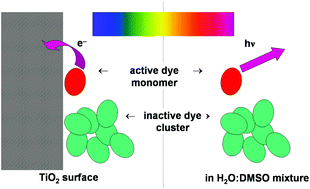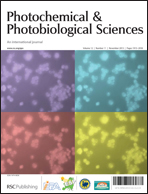Evidence on dye clustering in the sensitization of TiO2 by aluminum phthalocyanine
Abstract
As previous studies have shown, the photocatalytic reduction of Cr(VI) to Cr(III) in the presence of 4-chlorophenol can be carried out efficiently under visible irradiation using TiO2 modified with hydroxoaluminum-tricarboxymonoamide phthalocyanine (AlTCPc) in spite of the high aggregation tendency of the dye. In the present work, photocurrent and absorption spectra of AlTCPc modified TiO2 films are studied together with absorption and fluorescence of the dye in solution as a function of the concentration of the dye to clarify (a) the role of aggregates and the nature of the species responsible for electron injection into the semiconductor and (b) the reasons why, as reported earlier, the photocatalytic activity is nearly independent of dye loading at constant TiO2 mass. Results are consistent with the presence of AlTCPc clusters with similar properties both on the TiO2 surface and in H2O–DMSO solution. The actual photoactive species is the monomeric dye electronically coupled to the semiconductor. Monomer concentration depends only slightly on AlTCPc analytical concentration, in a way similar to surfactant monomers in micellar equilibrium, thus explaining the independence of photocatalytic activity on dye concentration.


 Please wait while we load your content...
Please wait while we load your content...